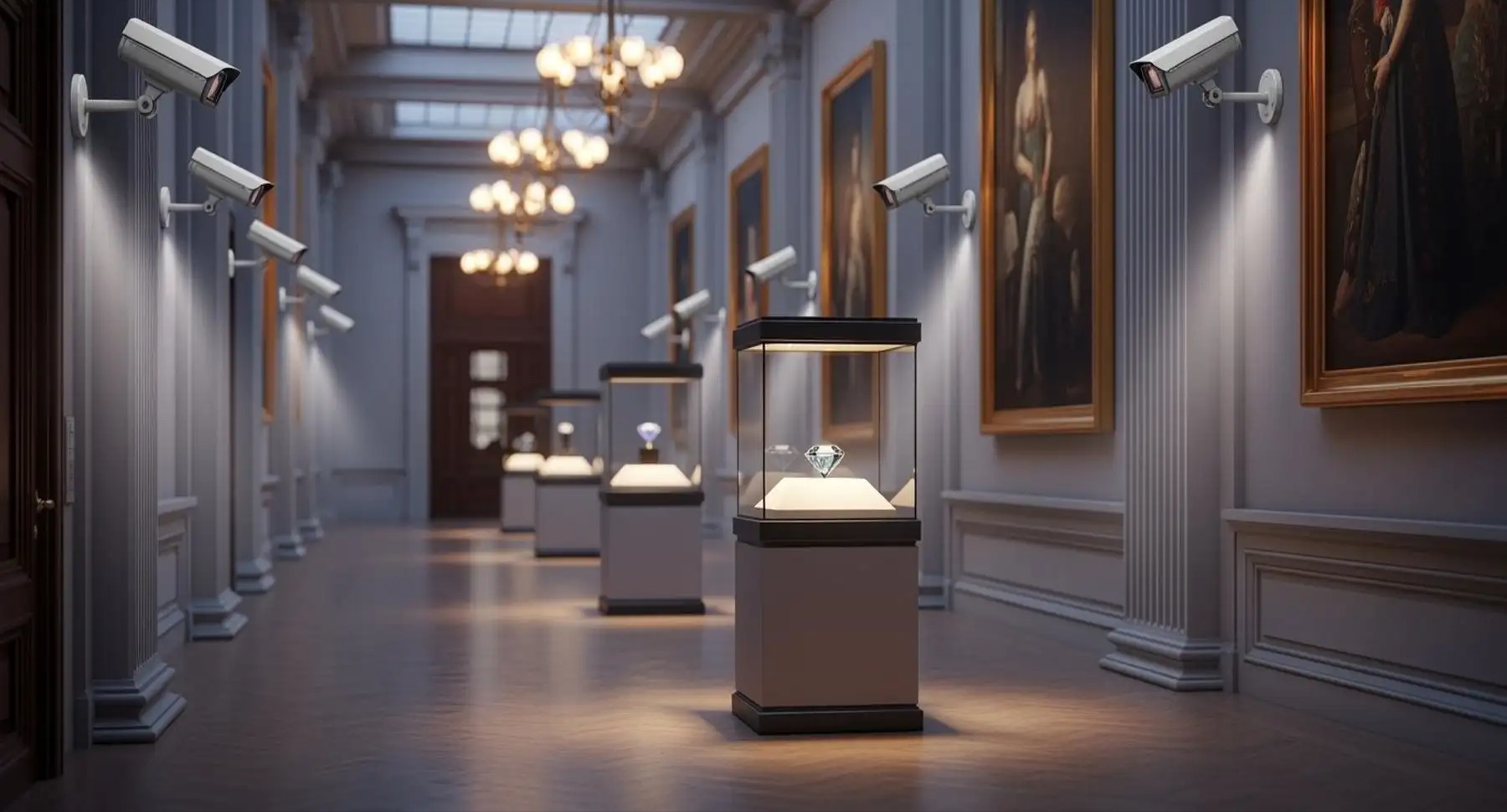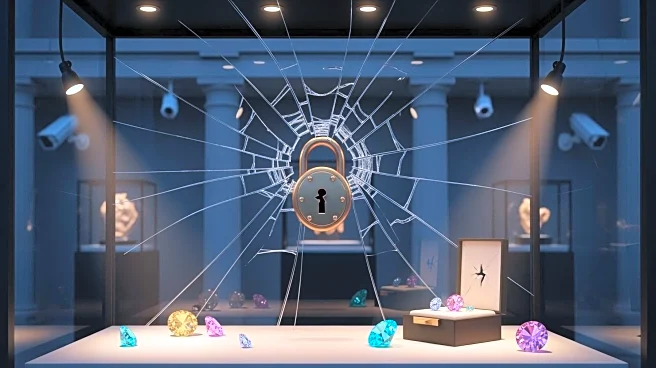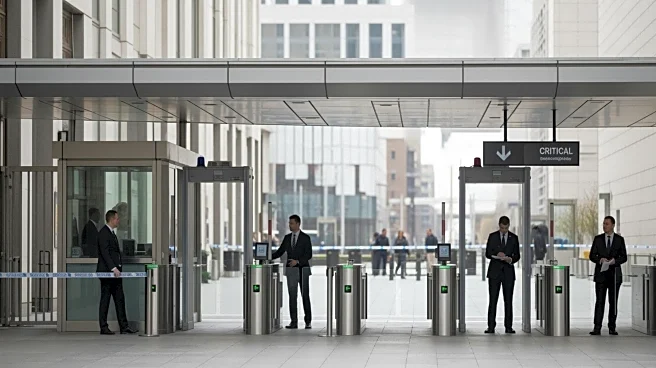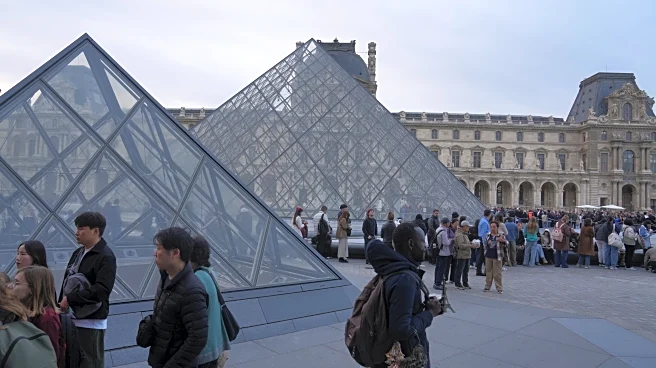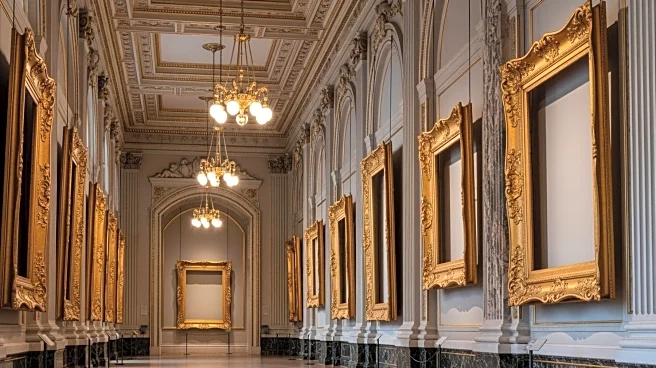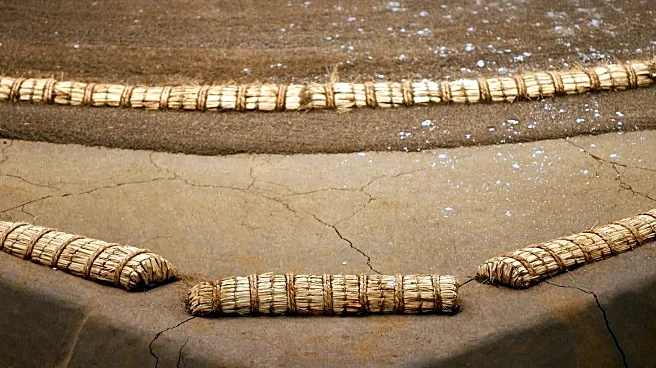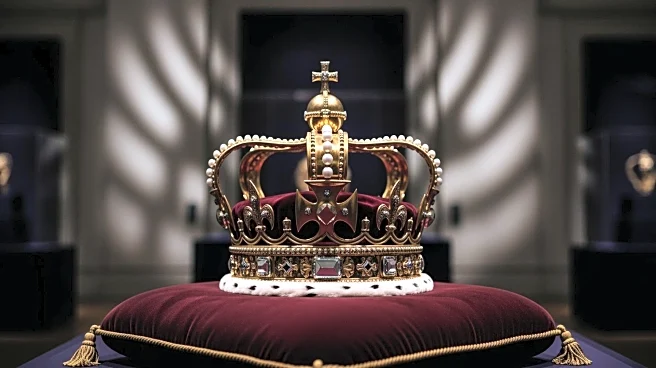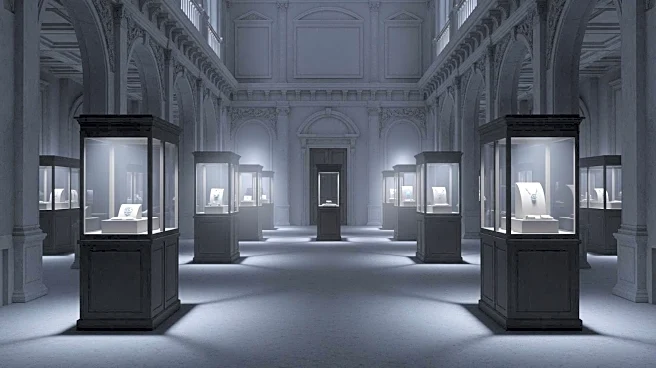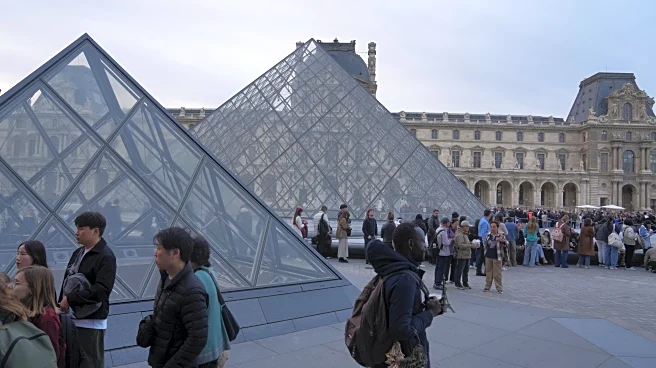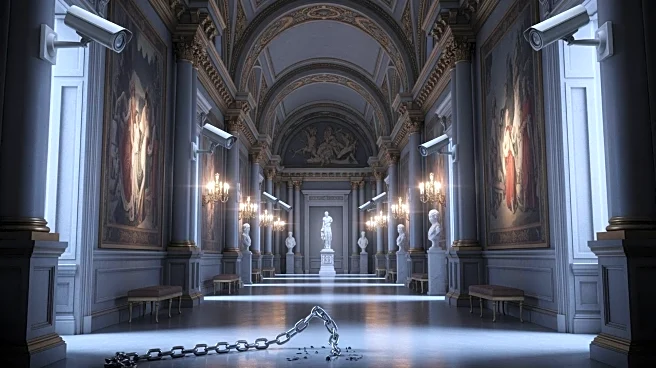What's Happening?
A daring daylight heist at the Louvre Museum in Paris resulted in the theft of eight valuable pieces of jewelry, including items once owned by French queens and empresses. The thieves, who used power tools
and a mechanical ladder to access the Gallery of Apollo, left behind over 150 DNA samples and fingerprints. The museum's director, Laurence des Cars, acknowledged weaknesses in the museum's security and surveillance systems and has called for an updated system and the establishment of an on-site police station. Despite the CCTV failings, other security cameras have helped track the thieves in Paris and surrounding regions.
Why It's Important?
The theft of crown jewels from the Louvre Museum highlights significant security vulnerabilities at one of the world's most visited museums. The incident underscores the need for improved security measures to protect valuable cultural artifacts. The heist has drawn attention to the museum's surveillance blind spots and the necessity for a comprehensive security overhaul. The stolen items, valued at approximately €88 million, represent a substantial cultural and financial loss, prompting concerns about the protection of national heritage. The museum's response could set a precedent for security protocols in cultural institutions worldwide.
What's Next?
The Louvre Museum director plans to push for the establishment of a police station within the museum and restrict parking around the premises to prevent easy access for potential thieves. The museum is also expected to upgrade its CCTV network to eliminate blind spots and enhance overall security. Investigators are analyzing the DNA samples left by the thieves, which may provide leads if the perpetrators are on file. The heightened media attention on the robbery may deter the thieves from attempting to sell the stolen jewels, as authorities continue to track their movements.
Beyond the Headlines
The heist raises ethical questions about the security of cultural heritage and the responsibilities of institutions to safeguard historical artifacts. It also highlights the evolving tactics of organized crime in targeting high-profile locations. The incident may prompt a reevaluation of security standards across museums globally, emphasizing the balance between accessibility for visitors and protection of valuable collections.
